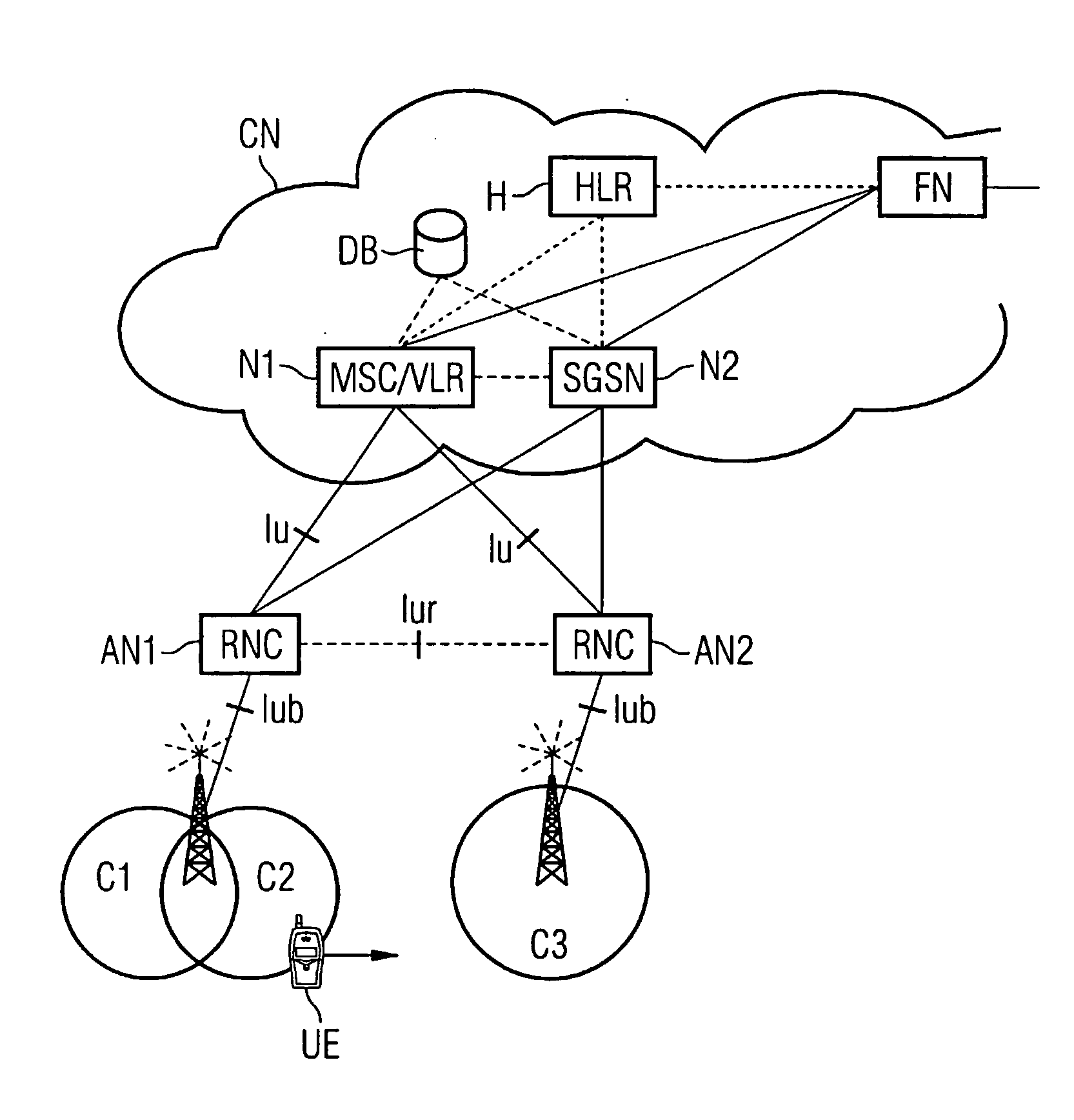Method for determining whether to grant access of a user equipment to a radio access network
- Summary
- Abstract
- Description
- Claims
- Application Information
AI Technical Summary
Benefits of technology
Problems solved by technology
Method used
Image
Examples
Embodiment Construction
[0029] FIGS. 1 and 2 illustrate different shared network scenarios which are for example suitable for UMTS shared network solutions:
[0030] In a Geographically Split Network operators each covering part of a region, for example a country, together provide access in the whole region.
[0031] In a Common Shared Network, e.g. one, UMTS operator provides UMTS service for himself and further operators who operate only GSM networks.
[0032] In a geographically split network, user equipment subscribed to different operators is allowed access to a UTRAN (UMTS Terrestrial Radio Access Network) with different access restrictions for different areas 1, 2, 3 of this UTRAN. An example situation is shown in FIG. 1, in which operator A and B together to cover a whole region but compete in a middle area 2 where they both have coverage. The networks of Operator A and B have an equivalent access technology in this case, i.e. both provide UMTS access. User equipment subscribed to operator B is allowed in t...
PUM
 Login to View More
Login to View More Abstract
Description
Claims
Application Information
 Login to View More
Login to View More - R&D
- Intellectual Property
- Life Sciences
- Materials
- Tech Scout
- Unparalleled Data Quality
- Higher Quality Content
- 60% Fewer Hallucinations
Browse by: Latest US Patents, China's latest patents, Technical Efficacy Thesaurus, Application Domain, Technology Topic, Popular Technical Reports.
© 2025 PatSnap. All rights reserved.Legal|Privacy policy|Modern Slavery Act Transparency Statement|Sitemap|About US| Contact US: help@patsnap.com



